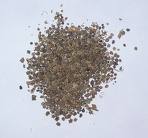Broom
Cytisus scoparius Leguminosae-Papilionoideae Also called Common Broom, Scotch Broom. Growing wild all over Europe, broom is a tough perennial shrub that thrives on scrubby moorland. Long,flexible branches grow in bundles from its stems - a fact that made it usgul for broom-making, hence the name. Sweetly scented flowers bloom in May and June, followed by downy seedpods. On hot July days you may hear loud crackling as hundreds if pods snap open to fling their seeds away. Parts used
ConstituentsThe flowers are rich in carotenoids and flavonoids - both of which are antioxidants, known to help to prevent cardiovascular disease and fight cancer. The flowers also contain small amounts of powerful alkaloids including a sedative called sparteine, dopamine and tyramine. CAUTIONS
PREPARATION AND DOSAGENever try to make your own preparations of broom. The plant should only ever be taken as prescribed by a qualified medical herbalist. Tinctures and creams are available as pharmacy-only products from licensed chemists. IF SYMPTOMS PERSISTCONSULT A DOCTOR Medicinal usesThe flavonoids in broom are diuretic making the plant useful for treating oedema - in which body tissues swell due to water retention. Broom can also be used to improve or re-establish urine flow that has been reduced by illness (oliguria). The sedative, sparteine, has a documented effect on the heartbeat, and broom is used to treat mild cases of irregular heartbeat (medically known as arrhythmia). A 1995 study in Canada found that patients taking sparteine had a reduced risk of ventricular fibrillation - a lifethreatening weakness in the heartbeat that can follow a heart attack or an electric shock. The tyramine in broom constricts blood vessels; preparations made using a combination of broom, black haw and juniper are used to treat varicose veins and poor circulation. CultivationSow ripe seeds in well-drained soil in a sunny position. Prune immediately after flowering. |
Ayurveda Book
This book on Ayurveda is meant for people interested to know about basics concepts of Ayurvedic healing and learn ayurveda concepts. Though there are many books Read More My SitesReal Testimonials
Connect with us |







